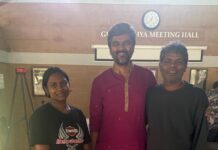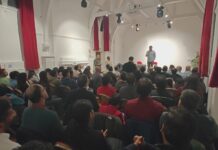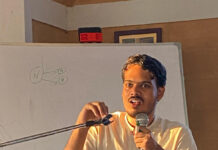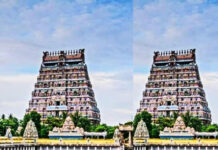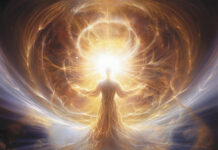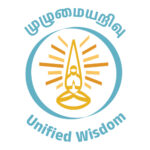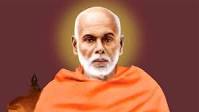
Guru Nitya Chaidhanya Yati once said, “Advaita Vedanta is like sulfuric acid. We can’t use it for our routine tasks because it’s so fierce. We have to dilute it. It has a chemical faculty, it absorbs humidity from the air, and it dilutes itself. You can only find water in that vessel if you keep it open in a room for some time. Sankara’s Advaita vision was immediately diluted by his disciples. For more than a thousand years, scholars have worked hard to add water to it. Now we have just water in the vessel with the Advaida brand name on it.
The history of Advaita Vedanta demonstrates how its original vision was reinterpreted and restructured by various scholars. Ramanuja, Madhva, Nimbarka, and Vallabha found their own visions after refuting Sankara. Scholars from the Advaita Vedanta school wrote commentaries on Sankara’s works and created their own versions. Sankara’s disciple Padmapada wrote a commentary on Sankara’s commentary on the Brahma Sutra by Badarayana. After that, Vacaspati Mishra wrote his famous commentary Bhamati on Padmapada’s commentary. The Advaita commentary tradition continues today. Every commentary is a small amount of water on the acid.
Advaita continuously compromised itself with two forces. One is the Karma tradition, i.e., Vedic rituals, Puranas, temple worship, Bhakti, and various religious customs and beliefs. The next one is the yogic tradition, i.e., meditation, tantric practices, and various mystic beliefs. Sankara himself was later narrated in various myths as a devotional poet and mystic.
Vacaspati Mishra, the proponent of Bhamati tradition, brought Memamsa elements into Advaida. Later Vivarana tradition annexed Vedic rituals and religious practices with it. Since the period of Vidhyaranya of Shrunkeri, Advaita Vedanta has continued as an abstract core of the Hindu religious system. According to the Sankara tradition developed by Sankara mutts, Advaita is nothing but a philosophical system that gives logical affirmation to all religious ritual practices in Hinduism.
The Vedandic revival, which started in the 18th century, found its highest point at Swami Vivekananda and Narayana Guru, and it is called Neo Vedanta. Nava Vedanta freed itself from religious ritualism and Vedic Karma tradition. But its primary concern was humanistic activities, not philosophic studies.
For the past fifty years, a lot of literature has been produced on Advaitic philosophy. We can classify those writings into two groups. One is academic research, mostly written by various western universities. They are so elaborate and the results of great erudition. They approach Vedanta as a part of ancient philosophy, a branch of a dead and fossilised tree. The next one is the modern writing by Indian Vedantic practitioners. Generally, they are new commentaries on old books or simple new interpretations. The majority of these Indian scholars are strong religious people who consider Advaidta to be Hindu theology.
The problem with these two groups is that both approach Advaita as an ‘old’ philosophy. For academics, it is a cadaver of an old thought, and their interest is similar to archaeological study. For our Vedantic practitioners, Advaita is an old teaching of a revered saint, which we have to learn and believe. (They even dare to say that Sankara was the Avatar of lord Shiva himself!)
I think Advaita is a living vision, not an old philosophy. It offers a cosmic vision that can give a holistic and practical understanding of our lives, nature, and universe. The philosophy of Advaita is nothing but a logical system developed to discuss with the other philosophic schools of that time.
For a modern man, if he is not an academic researcher, the complicated logical system and a lot of technical terms of old Advaitic discussions are not so worthy of his time. Sankara, as a philosopher and poet, is important to us today, not as a logician. So are the other Vedantic philosophers; we have to judge them according to their vision and poetry only. What is important today is feeling the vision of Advaita in our inner and outer lives and creating new logic to connect it with the modern philosophies of our time.
We need a new approach to Advaita because it is the pivotal point of Indian thought. We have elements of Advaitic vision even in our everyday lives; we can hear Advaitic statements from the lips of a common man on Indian streets. Understanding Advaita is actually understanding the thoughts and values that created our culture and subjectivity.
For that, we have to create a new methodology to study Advaita Vedanta. The hyper-research of western universities pushes us towards the abstract historical past and the never-ending chaos in it. The religious rendering locks us on the immovable rock of traditionalism. Both are not useful to understand Advaida Vedanta as a current and dynamic vision.
A modern Advaitic learning should be uncompromising in its intellectual quest. It should be very clear that the core of Advaita is Gnana,i.e. pure wisdom, acquired through knowledge only, and all other elements in it are compromises of later periods. Travelling through real Advaita is truly a walk on the razor’s edge. We have to create sharp philosophical discourses and continuous confrontation and dialogue with all ways of knowledge of our times.
Advaita can’t be learned without literature, because its major portion is pure poetry, and Sankara himself was a great poet. Modern-day Advaita can be taught combined with modern literature only. As Nataraja Guru aptly put it, Advaita is a ‘science that can be sung’. So it must have a dialogue with modern science. The Great Guru tradition of Narayana Guru taught that unified way of wisdom. Nataraja Guru and Nitya Chaidanya Yati developed their own methodology to teach it. Nitya Chaidhanya Yati called it a ‘symphony of values’.
A dance! A dance can unite all: vision, philosophy, sculpture, poetry, drama, and music. Dance is an art and a play at the same time. We can call it ‘Lela’, the dance of Shiva the Almighty. Any real education should be a lela, an act done only for its pure joy, a meaningless activity that can create all meaning.


